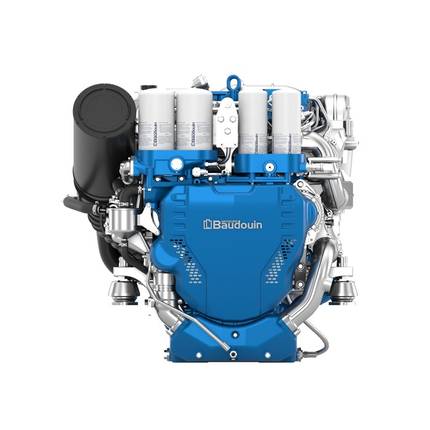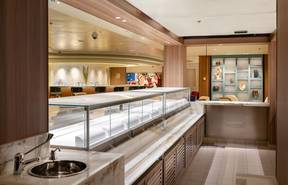Gladding-Hearn Delivers New Pilot Boat to Virginia Pilots
The Virginia Pilot Association has taken delivery of a new high-speed, pilot boat from Gladding-Hearn Shipbuilding, Duclos Corporation. It’s the Virginia pilots’ tenth launch built by the Somerset, Mass., shipyard since 1983.
The all-aluminum launch is designed and outfitted for the Pilot’s Hampton Roads harbor station. An all-new, shallow-V hull by Ray Hunt Design was created to optimize speed with a low wake while maintaining seakeeping and boarding performance. It displaces about 2,000 pounds less than a similar sized offshore pilot boat. As a result, the boat accelerates faster and reaches a higher top speed, explained Peter Duclos, the shipyard’s co-president and director of sales.
The pilot boat measures 58’ overall, with an 18’ beam and a 4’ draft. The vessel’s top speed is over 36 knots, powered by twin Volvo Penta D13-800, EPA Tier 3-certified diesel engines, each producing 800 Bhp at 2300 rpm.
Each engine is connected to a Volvo Penta IPS 30 propulsion pod, fitted with dual forward-facing, counter-rotating propellers and integrated exhaust system, and Volvo Penta’s EVC integrated electronic steering and control system at the helm station and aft docking station. A Humphree interceptor trim control system with its Automatic Trim Optimization, Automatic List Control, and Coordinated Turn Control functions has been installed at the transom. An Alaska Diesel generator, with 12kW of output, provides electricity.
The vessel’s pilothouse is placed amidships on a flush deck, with the helm station on center. A lightweight canopy extends approximately seven feet aft of the pilothouse to accommodate small groups. The arrangement is designed for up to two crew to stay overnight or live aboard. The pilothouse is outfitted with four Norsap shock-mitigating reclining seats, a small galley and settee with a table. The forecastle includes an enclosed head, two berths, a hanging locker and exposure suit cubbies.
Outside the pilothouse are heated side-decks and handrails to prevent ice accumulation. At the squared-off bow is raised vertical fendering with integral steps for transferring pilots to and from docks. The docking station is located near the transom, along with a winch-operated rotating davit system over a recessed platform and Harken TR-31 safety rail for pilot rescue operations.













